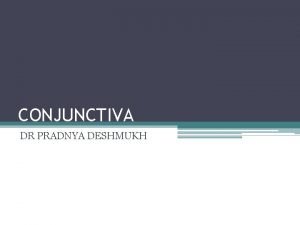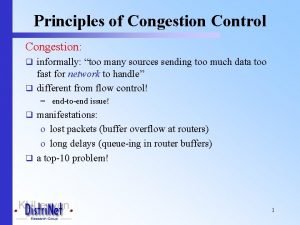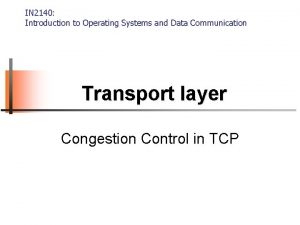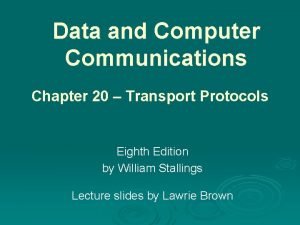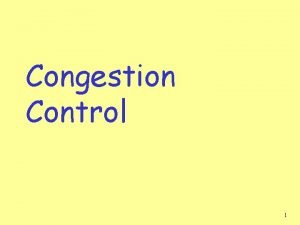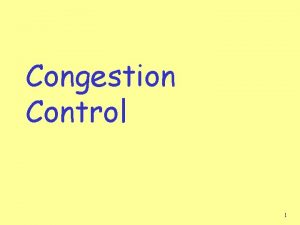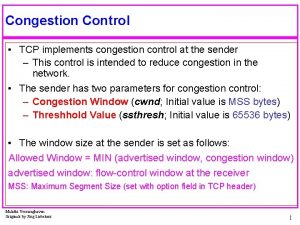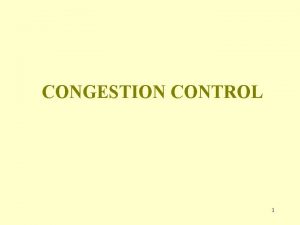Congestion control and the P 2 P value






- Slides: 6

Congestion control and the P 2 P value chain Damon Wischik, UCL Moez Draief, Imperial

P 2 P mechanism 2/6 • P 2 P algorithms typically choose peers at random • They use congestion control, which means they download at a higher speed when the link is uncongested

3/6 Problems with P 2 P it doesn’t make sense to assign bandwidth based only on congestion ? ? ? $$ it doesn’t make sense to pick peers at random lowbandwidth peer who has no content peer with a good but pricey connection peer who can best disseminate the content

Research question • How should capacity be apportioned between users? How should costs be split? • What is the economy of P 2 P distribution? 4/6

The virtual economy of the Internet 5/6 • TCP, the Internet’s algorithm for congestion control, was invented by Van Jacobson in 1988, to save the Internet from congestion collapse • In 2000, Frank Kelly proved that the TCP algorithm behaves as if there is a virtual economy

The virtual economy of P 2 P • What “social welfare” do existing P 2 P algorithms seek to maximize? • What is the economic interpretation of P 2 P tradeoffs? – should I send to a content-poor peer, or to a wellconnected peer? – should I offer to upload, or should I pay to download? • How does the economic interpretation translate into actual algorithms? • How should ISPs use “price signals” in this “virtual economy” to control their networks? • Will the network operate autonomically? 6/6
